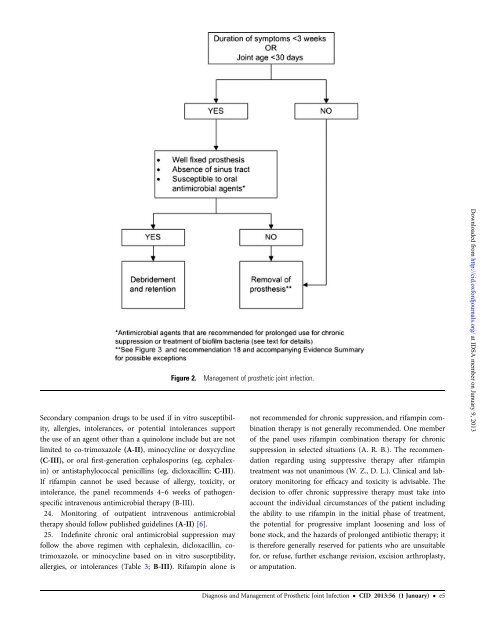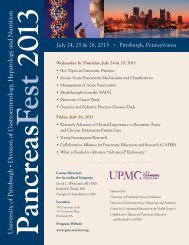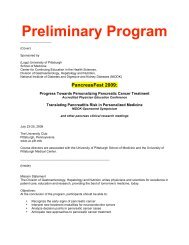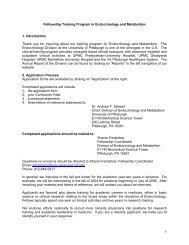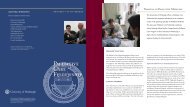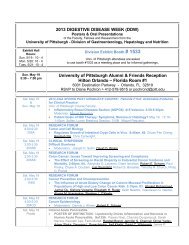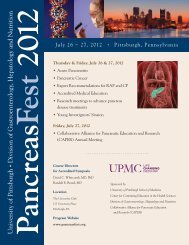Diagnosis and Management of Prosthetic Joint Infection: Clinical ...
Diagnosis and Management of Prosthetic Joint Infection: Clinical ...
Diagnosis and Management of Prosthetic Joint Infection: Clinical ...
You also want an ePaper? Increase the reach of your titles
YUMPU automatically turns print PDFs into web optimized ePapers that Google loves.
Figure 2.Secondary companion drugs to be used if in vitro susceptibility,allergies, intolerances, or potential intolerances supportthe use <strong>of</strong> an agent other than a quinolone include but are notlimited to co-trimoxazole (A-II), minocycline or doxycycline(C-III), or oral first-generation cephalosporins (eg, cephalexin)or antistaphylococcal penicillins (eg, dicloxacillin; C-III).If rifampin cannot be used because <strong>of</strong> allergy, toxicity, orintolerance, the panel recommends 4–6 weeks <strong>of</strong> pathogenspecificintravenous antimicrobial therapy (B-III).24. Monitoring <strong>of</strong> outpatient intravenous antimicrobialtherapy should follow published guidelines (A-II) [6].25. Indefinite chronic oral antimicrobial suppression mayfollow the above regimen with cephalexin, dicloxacillin, cotrimoxazole,or minocycline based on in vitro susceptibility,allergies, or intolerances (Table 3; B-III). Rifampin alone is<strong>Management</strong> <strong>of</strong> prosthetic joint infection.not recommended for chronic suppression, <strong>and</strong> rifampin combinationtherapy is not generally recommended. One member<strong>of</strong> the panel uses rifampin combination therapy for chronicsuppression in selected situations (A. R. B.). The recommendationregarding using suppressive therapy after rifampintreatment was not unanimous (W. Z., D. L.). <strong>Clinical</strong> <strong>and</strong> laboratorymonitoring for efficacy <strong>and</strong> toxicity is advisable. Thedecision to <strong>of</strong>fer chronic suppressive therapy must take intoaccount the individual circumstances <strong>of</strong> the patient includingthe ability to use rifampin in the initial phase <strong>of</strong> treatment,the potential for progressive implant loosening <strong>and</strong> loss <strong>of</strong>bone stock, <strong>and</strong> the hazards <strong>of</strong> prolonged antibiotic therapy; itis therefore generally reserved for patients who are unsuitablefor, or refuse, further exchange revision, excision arthroplasty,or amputation.Downloaded from http://cid.oxfordjournals.org/ at IDSA member on January 9, 2013<strong>Diagnosis</strong> <strong>and</strong> <strong>Management</strong> <strong>of</strong> <strong>Prosthetic</strong> <strong>Joint</strong> <strong>Infection</strong> • CID 2013:56 (1 January) • e5


